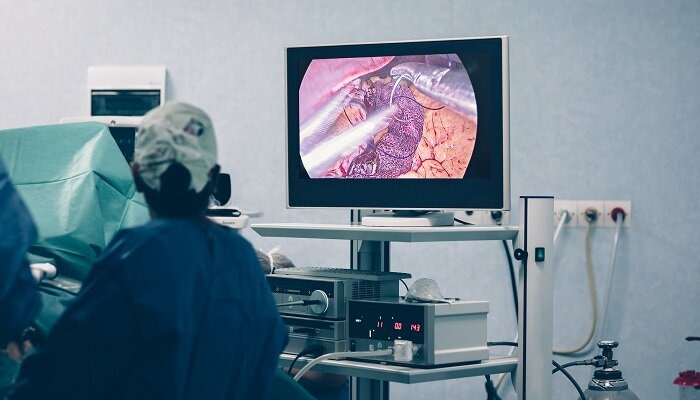In a report presented by The Guardian, 38% or 2.6 billion people in the world were either overweight or obese in 2003. As these rates continue to climb, bariatric surgery has emerged as an effective long-term treatment option for substantial and sustained weight loss.┬Ā
However, traditional open bariatric surgery procedures come with downsides like extended recovery times and high complication rates. This has driven demand for less invasive alternatives, with the past decade ushering in remarkable innovations in the industry. Modern techniques leverage advanced technologies like robotics, endoscopy, and miniaturized instruments to dramatically reduce procedure footprint and improve patient outcomes.┬Ā
That said, letŌĆÖs explore some of these innovative procedures and how theyŌĆÖre pushing the field rapidly forward.
1. Miniaturization and laparoscopic advances
The continual miniaturization of surgical tools is pushing laparoscopic bariatric procedures to new heights of minimal invasiveness. Utterly small devices like reduced-diameter staplers and micro-graspers now enable intricate stomach reconstruction through relatively tiny laparoscopic incisions rather than open procedures requiring large abdominal openings.┬Ā
The recently developed minigrasper instruments are thin enough to fit through less than 5mm ports yet sturdy enough to provide firm tissue stability and exposure. This allows procedures like mini gastric bypass surgery to be conducted through just one small single port in the abdomen.
Such miniaturization developments in laparoscopy are even culminating in early trials of needlescopic bariatric surgery. This illustrates the tremendous progress toward scarless, trauma-free bariatric surgical solutions made possible by technological focus on packing capabilities into exceptionally small footprints.
2. Endoscopic Sleeve Gastroplasty
Endoscopic sleeve gastroplasty (ESG) represents an incisionless approach to reducing stomach capacity and hormone production using the same principles of surgical sleeve gastrectomy. During the ESG procedure, specialized endoscopic tools and suturing devices are navigated through the mouth and down the throat to sculpt and cinch the stomach internally.┬Ā
This mimics traditional gastric sleeve surgery by removing a portion of the stomach without any external incisions or stomach stapling. Given the minimally invasive nature of ESG with no wounds, scarring, or staple-related risks, adoption is rapidly increasing for appropriate bariatric surgery candidates.
Wider implementation will depend on more long-term data on durability. But the horizon looks bright for ESG to deliver comparable results to surgery through a low-risk, outpatient experience.
3. Robotic-assisted bariatric surgery
Robotic-assisted surgery has been adapted for an increasing range of minimally invasive bariatric procedures. The introduction of the da Vinci system became a game-changer in the industry. ItŌĆÖs a robot that allows bariatric surgeons to perform procedures like sleeve gastrectomy and gastric bypass with more precision, flexibility, and ease.┬Ā
The operating surgeon sits at a control console next to the patient. Here, they have a sharp, 3D view of the surgery site that shows much greater detail than the human eye. The operator guides the movements of tiny robotic instruments that exceed the range of motion achievable manually.
These nimble robot arms can reach difficult angles smoothly and steadily in real time, unlike a human hand. While the robot handles physical tasks like suturing tissue and maneuvering staplers, the surgeon remains fully focused on procedural decision-making and care of the patient. The da Vinci platform essentially acts as an extension of a skilled surgeonŌĆÖs hands, allowing them to operate with enhanced vision, coordination, and stamina, empowering the best outcomes.
4. Fusion of technology and surgery
Bariatric surgery is increasingly integrating advanced technologies like augmented reality (AR), 3D modeling, and smart tools to elevate precision, predictability, and customization.
AR headsets allow surgeons to visualize vital anatomy below tissue surfaces during procedures or overlay digital templates of optimal staple patterns. Intraoperative image guidance based on CT and MRI scans helps translate digital surgical plans directly to live patients. 3D visualization and printing of bariatric anatomy also enhance presurgical planning.
The next wave of integration fuses data analytics, machine learning algorithms, and Internet of Things connectivity to provide real-time procedural insights to surgeons through context-aware operating room ecosystems and semi-autonomous robotic surgery systems.┬Ā
Additionally, innovations like confocal endomicroscopy and spectroscopic guidance are emerging as part of the weight loss techniques. They functionally assess tissue health, perfusion, and microscopic structures during bariatric surgery. With digital interfaces and AI capacities fusing more comprehensively with traditional operative methods, the once unimaginable levels of precision, accuracy, and customization are increasingly within reach.
Conclusion
Bariatric surgery continues to push boundaries with minimal invasiveness through remarkable technological innovations. From dramatic instrument miniaturization enabling needlescopic procedures to robot-assisted enhancements in surgical precision, vision, and ergonomics, the many recent advances showcase tremendous promise.┬Ā

Fusion of augmented reality, data analytics, and machine learning also takes accuracy, customization, and predictability to new heights. Though long-term research continues, these cutting-edge techniques clearly represent the future in moving toward scarless, trauma-free bariatric surgery with optimized results.


















